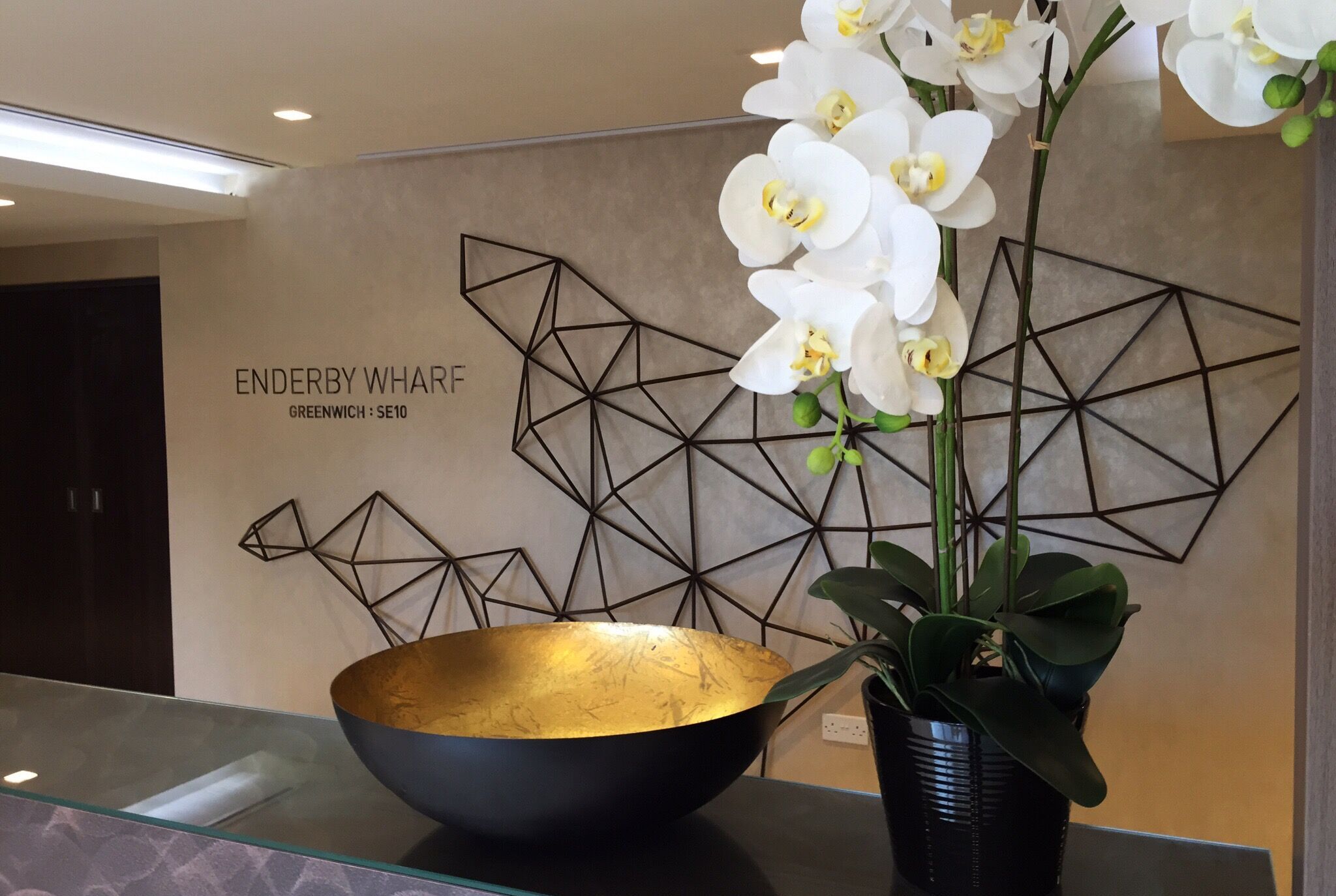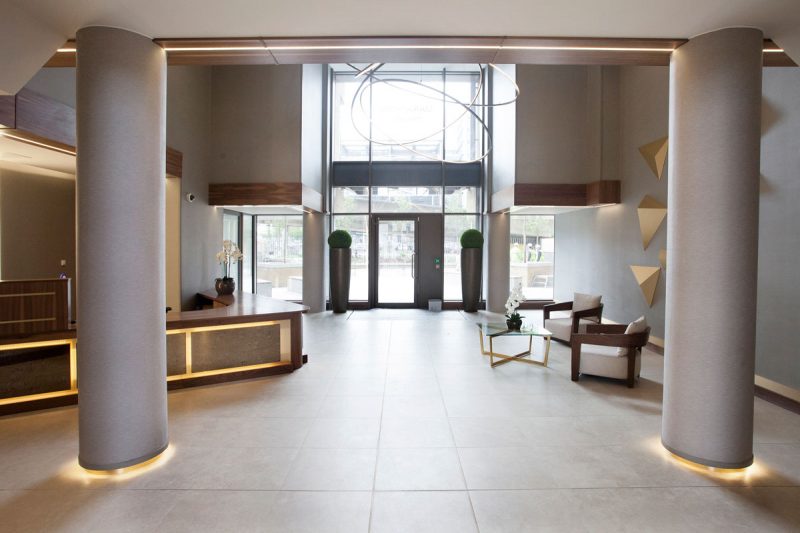Common spaces, be they in an office, residential development or hotel, have arguably become the most important assets for businesses to promote brand identity and culture. The idea of simply having a desk shoved into a corner has grown tired, swiftly replaced by inclusive models with a fresh approach to reception design.
The changing role of a business lobby
The role of a physical office lobby is just as important now than it has ever been. Beyond security and information exchange, lobbies are developing into retail spaces, exhibition and event spaces, libraries, storage spaces and welcoming environments to do business away from the office. It is now crucial that your interior design facilitates this informal, multi-functional environment.
Lobby interior design should:
- Reflect your brand values and culture
- Provide entertainment value for visitors
- Create an informal, immersive social space that people want to spend time in
- Become the heart of a building to visually guide visitors
- Not lose sight of practical elements, like security and information exchange.
5 ingredient formula of an effective lobby space
The evolution of the lobby is exciting for us designers, but what actually makes a great lobby interior design concept? We’ve broken the concept down into five tangle building blocks.
Space efficiency
Making the most of any space is what we do at Spot This Space. Smart spatial planning needn’t rely on palatial dimensions, nor should it lose sight of functionality. Today’s flexible, multipurpose approach is accessible for businesses with small commercial premises, too. The right concept should result in a relaxing or entertaining common space which provides a perfect respite away from the office.
Identity
Lobby interior design either unifies a multi-occupancy building or develops an individual brand identity as soon as visitors walk through the front door. Studies have shown that an active front of house generates a positive identity. As we know, there is huge scope for designers to brand a commercial space. One of the most exciting aspects of interior design for us is being able to tell a narrative, and the lobby is a great place to start.
Satisfaction
Create a sense of satisfaction with current occupants in the building and new visitors. A design which meets both criteria enables a business to attract, as well as retain, business over the long term.
Activity
It’s simply not enough to create an open space and wait for activity to happen. Businesses use great interior design to turn a reception area into communal places to meet, eat, chat or relax. Plenty of learnings can be taken from co-working design to create the interactive effect you want.
Financial value
If an innovative and welcoming lobby area improves brand reputation and brings in new business, then it’s worth the money. Value for money in this instance can often be hard to quantify, but the great thing about immersive design is that it isn’t reliant on traditional details to impress, like double height dimensions. If a space fulfills the five aims of a lobby, that in itself should be treated as a business case worthy of investment.




